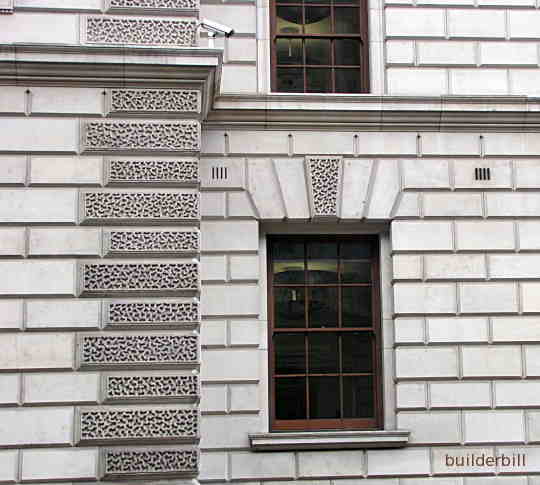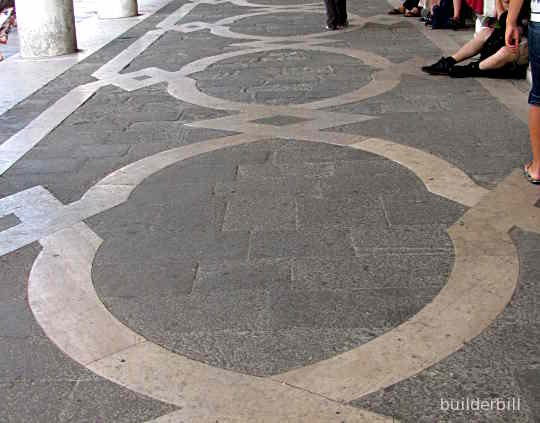 |
|||||||||
Graphical Construction Glossary >> masonry. >> stonework
Stone is still used today in many buildings and it still retains the reputation of being a number one prestige material. It has been the material of choice for anyone who wanted to leave their mark for posterity. The rulers of ancient Babylon, Egypt, Greece and Rome all left their memorials in stone. The Khmer's who built the Bayon temple above built with large squared blocks of stone with no mortar joints but with a series of mortise and tenon joints to hold the structure from moving. With an all round scaffold they then set about carving the structures into what we see today.
The stonemasons that built the building above worked in the European tradition of preparing each ashlar (piece) precisely, usually in a shed on site or in modern times in a factory. They would then lay the pieces on a bed of mortar. In the photo above the mortar bed is extremely thin. Other means of securing the stones were used in critical places.
Above is a stone pavement in Saint Mark's square, Venice, Italy. Stone has many different characteristics and stones may be categorised by durability, weight, ease of work etc. The pavement stones above would have been chosen for their durability and abrasion resistance. If you didn't find exactly what you are looking for try this search tool that will search the site and the web. "What can be added to the happiness of a man who is in health, out of debt, and has a clear conscience? "When we build, let us think that we build for ever."John Ruskin 1819-1900 |
Hire Equipment  Furniture Fittings - Architectural Hardware - Electronic Locking Systems - Technical Hardware BuilderBill sponsorship Glossary Pages.Roof Glossary and Roofing Formwork Glossary and other tempory work. Hand Tools Glossary Power Tools Glossary Asbestos Glossary Woodwork Glossary Stair Glossary Concrete Glossary Masonry Glossary doors Glossary BuilderBill Books Building Maths  Stair Design  Asbestos Book |
||||||||
|
|
|||||||||
|
Please Note! The information on this site is offered as a guide only! When we are talking about areas where building regulations or safety regulations could exist,the information here could be wrong for your area. It could be out of date! Regulations breed faster than rabbits! You must check your own local conditions. Copyright © Bill Bradley 2007-2012. All rights reserved. |
|||||||||


